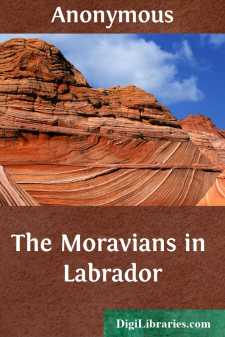Categories
- Antiques & Collectibles 13
- Architecture 36
- Art 48
- Bibles 22
- Biography & Autobiography 813
- Body, Mind & Spirit 142
- Business & Economics 28
- Children's Books 15
- Children's Fiction 12
- Computers 4
- Cooking 94
- Crafts & Hobbies 4
- Drama 346
- Education 46
- Family & Relationships 57
- Fiction 11829
- Games 19
- Gardening 17
- Health & Fitness 34
- History 1377
- House & Home 1
- Humor 147
- Juvenile Fiction 1873
- Juvenile Nonfiction 202
- Language Arts & Disciplines 88
- Law 16
- Literary Collections 686
- Literary Criticism 179
- Mathematics 13
- Medical 41
- Music 40
- Nature 179
- Non-Classifiable 1768
- Performing Arts 7
- Periodicals 1453
- Philosophy 64
- Photography 2
- Poetry 896
- Political Science 203
- Psychology 42
- Reference 154
- Religion 513
- Science 126
- Self-Help 84
- Social Science 81
- Sports & Recreation 34
- Study Aids 3
- Technology & Engineering 59
- Transportation 23
- Travel 463
- True Crime 29
The Moravians in Labrador
by: Anonymous
Description:
Excerpt
THE MORAVIANS IN LABRADOR
CHAPTER I.
Hudson's Bay Company first settle among the Esquimaux.—J.C. Erhardt suggests a mission—his letter to the Moravian Bishop.—M. Stach consulted.—London merchants undertake the scheme—engage Erhardt—its fatal conclusion.—Jans Haven employed by the Brethren, encouraged by the British Government, sets out on a voyage of discovery—his providential arrival at Quirpont—first meeting with the Esquimaux—his interesting intercourse—returns to England.—His second expedition, accompanied by Drachart and other missionaries—their proceedings.—Drachart's remarkable conversation with the natives—influence of the missionaries in preserving peace—their religious communications with the savages—the curiosity of the latter—their thievish tricks—their kindness to the missionaries—a dreadful storm.—Drachart and Haven entertained by an Angekok—his incantations—their parting addresses to each other—the missionaries return to London.
When the original Hudson's Bay Company was formed, 1688, for the purpose of trading in furs with the natives, the instructions they sent to their factors breathed the most liberal and benevolent principles. They directed them to use every means in their power to reclaim the heathen from a state of barbarism, and instil into their minds the pure lessons of Christianity; and at the same time admonished them to trade equitably, and take no advantage of their untutored simplicity. It does not appear that much attention was paid to either of these injunctions, or if there was, the efforts proved as abortive as those they made to discover the western passage. The moral wilderness still remains around their settlements on the East Maine, while those of the brethren on the opposite coast of Labrador bloom and blossom as the rose.
The first thought of attempting to establish a missionary settlement in that quarter among the Esquimaux, originated with a Moravian brother, John Christian Erhardt, a Dutch pilot. He had in early life made several voyages to Davis Straits; but in 1749, when sailing under Captain Grierson in the Irene, the vessel touched at New Hernhut in Greenland, where he saw the congregation that had been gathered from among the heathen in that land; and in conversation with the brethren they told him that they supposed the opposite coast of North America was peopled by tribes having the same customs and speaking the same language as the Greenlanders. This statement made a deep impression on his mind, and during his stay at Hernhaag, 1750, while musing on the state of that people sitting in the darkness of heathenism, and on how the light of the gospel might be communicated to them, a description of the journey undertaken by Henry Ellis, 1746-7, at the desire of the Hudson's Bay Company, to try to discover a north-west passage, accidentally fell into his hands. The account there given of these barbarous regions convinced him that the people were sprung from the same origin with the Greenlanders, and the methods suggested by Ellis for their moral improvement enabled him to bring his own scheme to a bearing....












